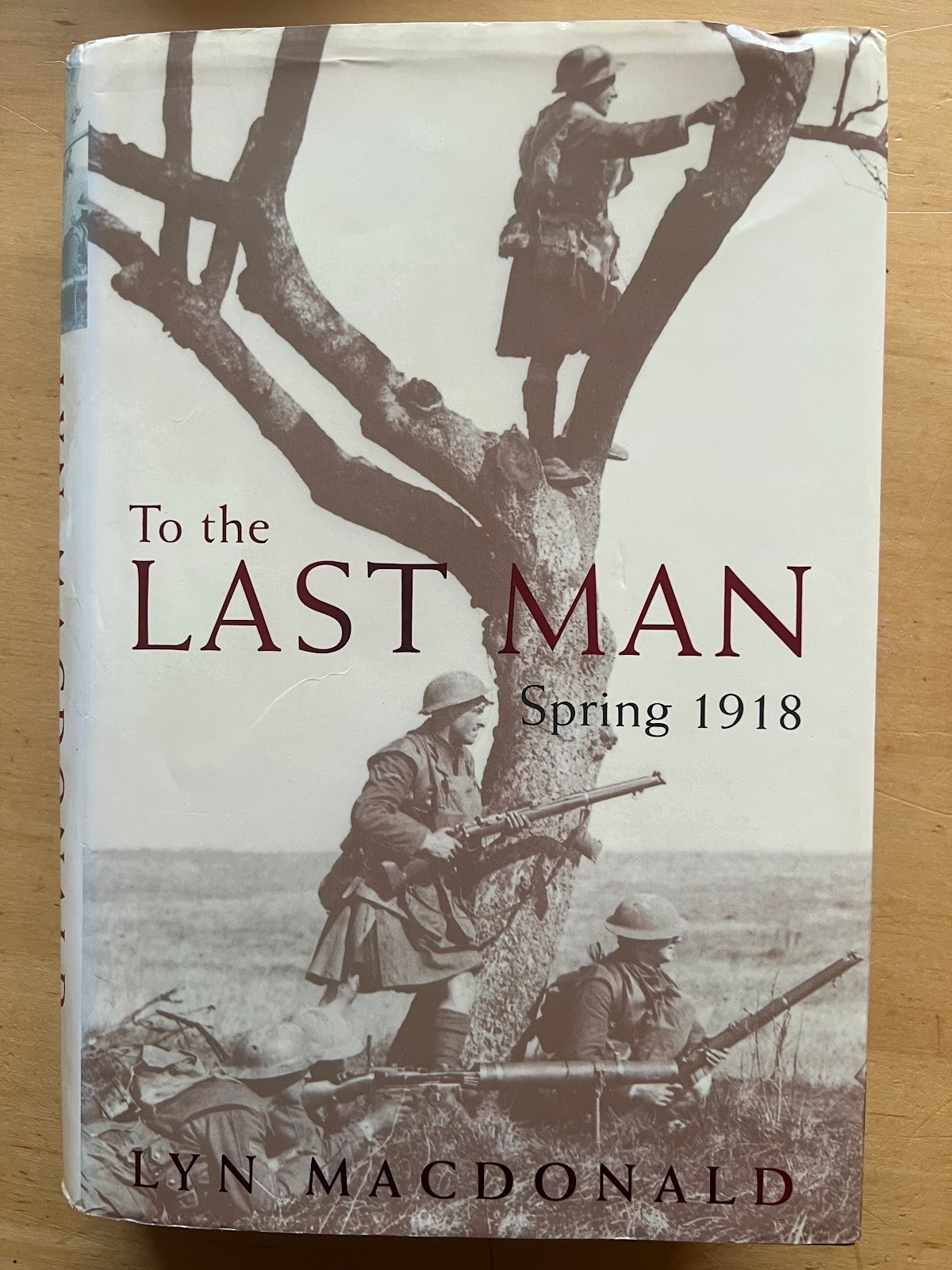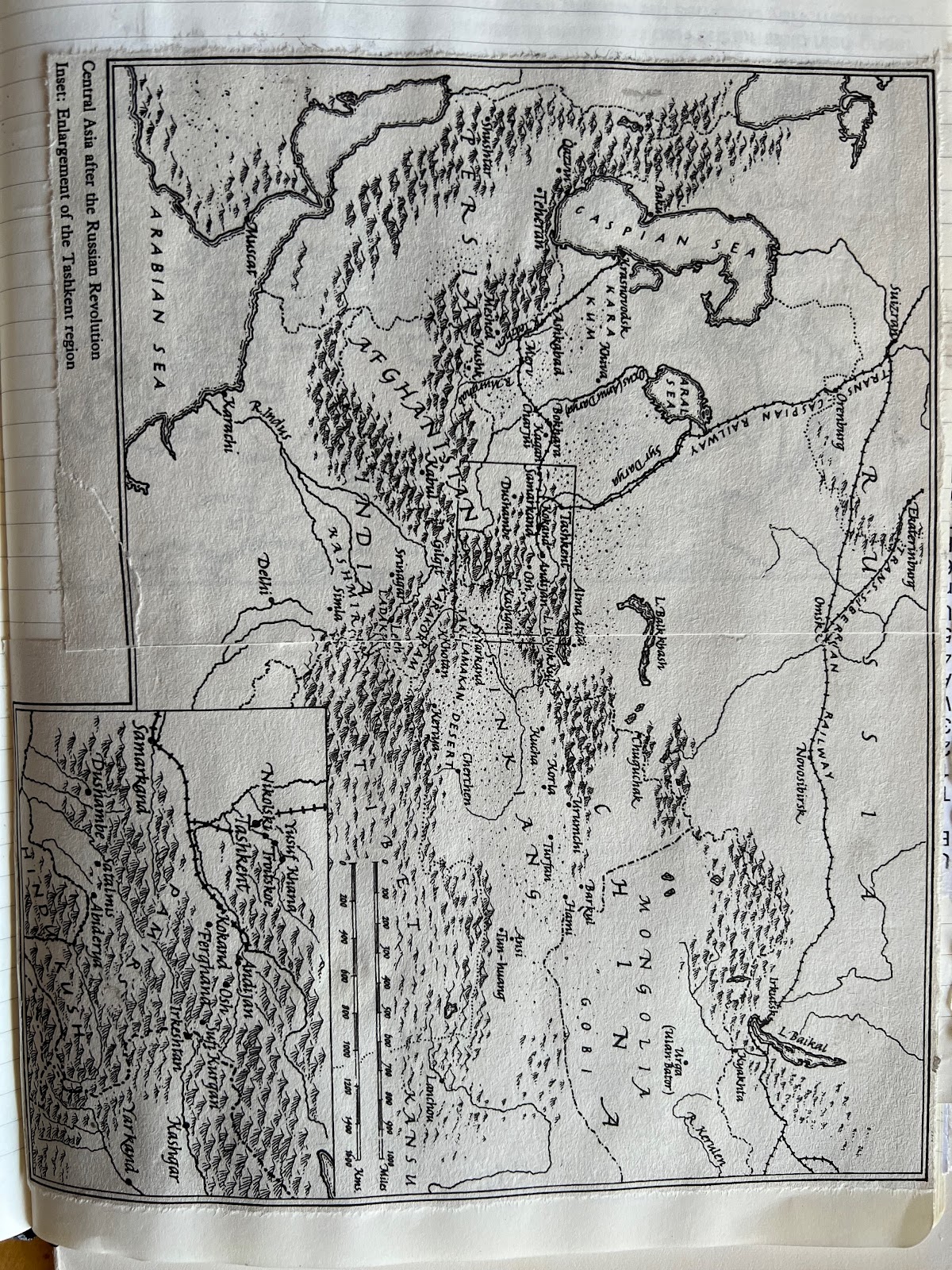Setting the East Ablaze | Peter Hopkirk (!984)
Conflict in Central Asia following the Bolshevik Revolution.
1918 | An Absolutely First-class Man | The Indian Political Service instruct Eric Bailey to travel to Tashkent to find out what is happening in Russian Central Asia.
1917-18 | The Strange Adventures of a Butterfly Collector | The story of the Tashkent Soviet before Bailey arrived, based on the account of Captain Brun, a Danish officer sent to improve the conditions of the Austro-Hungarian prisoners of war in Russian Central Asia. Muslim Kokand was brutal sacked by the Soviets but an attack on Bokhara was violently repulsed.
1918 | Bailey Vanishes | General Mallinson’s troops clashed with the Bolsheviks in Transcaspia. Sir George Macartney arrives in Tashkent but leaves because British troops have landed in Archangel. Bailey is questioned by the Cheka but escapes arrest disguised as an Austrian PoW. Nazaroff, Bailey’s White Russian contact, plans to overthrow the Soviet but is arrested, and Osipov takes over the conspiracy.
1919 | The Executioner | Osipov, the Commissar for War, overthrows the Tashkent Soviet for a day. There is a blood-bath. Brun avoids revolutionary justice. Mallison withdraws from Russia. Bailey is unaccounted for.
1919 | Hunted | Nazaroff is in hiding and escapes to Kashgar the following year. Bailey is in hiding in the hills but returns to Tashkent after the Osipov Uprising.
1919-20 | Bailey Joins the Soviet Secret Service | The Kremlin regain control over Tashkent. The Third Afgan War breaks out. Bailey decides to leave Tashkent. In disguise he is recruited by the Cheka, with his police contact Manditch, to spy on Bokhara. From there they escape across the border into India.
1918-19 | ‘To Set the East Ablaze’ | Major Etherton replaces Sir George Macartney as Consul-General in Kashgar. Etherton enhances his intelligence network. Governor Yang Tseng-hsin disarms the Red and White Russians entering Sinkiang. The Kremlin set up the Comintern. Roy becomes the leading Indian communist.
1919-20 | The Army of God | The Cominten look to exploit increasing Muslim unrest. The British commit the Amritsar Massacre. Frunze occupies Bokhara. The Soviets lose the Battle of Warsaw. Roy proposes an invasion of British India. The British gather information on Comintern and counter Bolshevik activity. Etherton continues his flow of intelligence.
1920-21 | The Bloody Baron | The anti-Bolshevik and anti-semitic madman Baron von Urgern-Sternberg takes control of Mongolia with an army of White Russians, Cossacks and Mongols in a series of appaling attrocities.
1921 | An Avenue of Gallows | The Anglo-Soviet Trade Agreement is signed. Roy’s plan is abandoned and his activites move to Moscow. Etherton ignores the attempt to stop his activites. Lord Curzon is rude to the Soviets. Gandhi becomes the leader of anti-British protest in India. Urgern-Sternberg believes himself to be the rencarnation of Genghis Khan. He invades the Soviet Union and is defeated. The Soviets shoot the Baron and occupy Mongolia.
1920-23 | The Last Stand of Enver Pasha | The sack of Kokand led to fighting between the Bolsheviks and the Basmachi. Frunze turns the tide in favour of the Soviets. Lenin appoints Enver Pasha to lead a Muslim invasion of British India but instead he leads the Basmachi against the Bolsheviks. Gandhi launches a civil disobedience campaign but stops it when turns violent. Roy makes little headway and is criticized by Stalin.
1922-23 | Curzon’s Ultimatum | Enver Pasha is defeated and killed. Lord Curzon tells the Soviets to stop interfering with British interests in Asia. Both sides think they win.
1923-24 | Squeezed Out Like a Lemon | Borodin organises the infiltration of Sun Yat-tse’s Kuomintang Party. Lenin dies. The British recognise the Soviet Union.
1923-27 | Skullduggery on the Silk Road | The Soviets appoint Doumpiss Consul-General in Sinklang. Nazaroff flees to Britain. Doumpiss unsuccessfully challenges Yang Tseng-hsin.
1927 | The Lady Vanishes | The British break off all relations with the Soviets. The Chinese communists are violently suppressed by Chiang Kai-shek. Borodin’s wife Freya is captured by the warlord Chang Tso-lin but the Comiterm arrange for her to escape.
1929 | The Last of the Central Asian Dreamers | The defection of Bajanov enables the British to crack down on Indian communists: the Meerut Conspiracy Trial. Yang Tseng-hsin is assasinated and a brutal civil war breaks out in Sinkiang between Chin Shu-jen, his Minister of the Interior, and Ma Chung-yin, leader of the Tungans
1933 | The New Bogy-men of the East | The Soviets ccupy Sinkiang on the border of British India. But Stalin becomes preoccupied with the rise of Japan and the formation of a Popular Front against Fascism including Britain.





